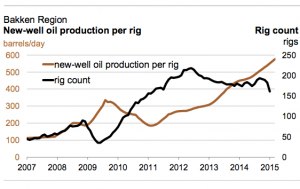The White House issued a press release this week to announce that President Obama has carried out his promise to veto the Keystone XL Pipeline Approval Act. This action allows a final decision to be put on hold until further environmental reviews are complete.
The Keystone pipeline veto is the latest round in a highly political debate that has been raging since 2008, when the TransCanada Corporation first applied for a permit to construct the pipeline. At issue is a proposed 1,179-mile section of the pipeline that would run through the heart of the Bakken Formation in order to deliver 800,000 barrels of petroleum to the refineries on the Gulf Coast.
Related: Keystone Showdown Likely for New Year | Bakken
Related: No Need For Keystone XL - Continental's CEO Harold Hamm
Since the first of the year, President Obama has hinted at his intentions to veto anything the Republican majority might try to push through. Instead he has urged lawmakers to “pass a bipartisan infrastructure plan that could create more than 30 times as many jobs per year, and make this country stronger for decades to come.” Read more here.
“In the official news release, President Obama stated “The Presidential power to veto legislation is one I take seriously. But I also take seriously my responsibility to the American people. And because this act of Congress conflicts with established executive branch procedures and cuts short thorough consideration of issues that could bear on our national interest — including our security, safety, and environment — it has earned my veto.”
A backlash to the Keystone pipeline veto began almost immediately and accusations towards the President have accelerated, with some decrying his ties to environmental groups. The future of the legislation is unclear, but republican lawmakers are certain to try and override the veto very soon.
Read more at whitehouse.gov
photo credit: Seal Of The President Of The United States Of America (license)





